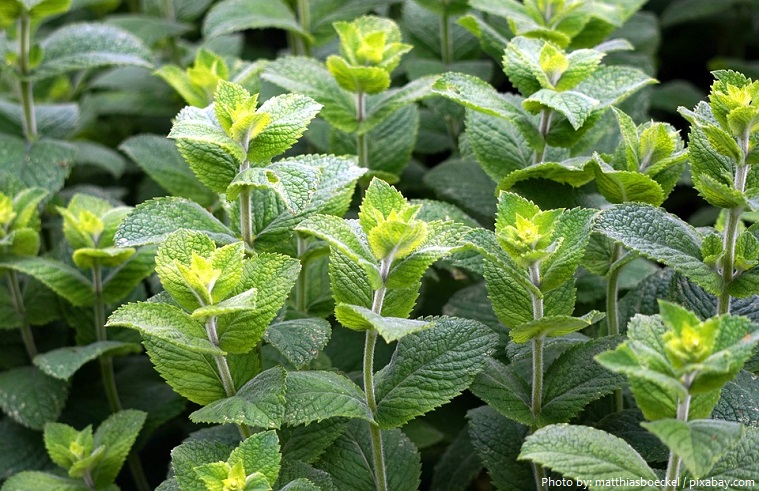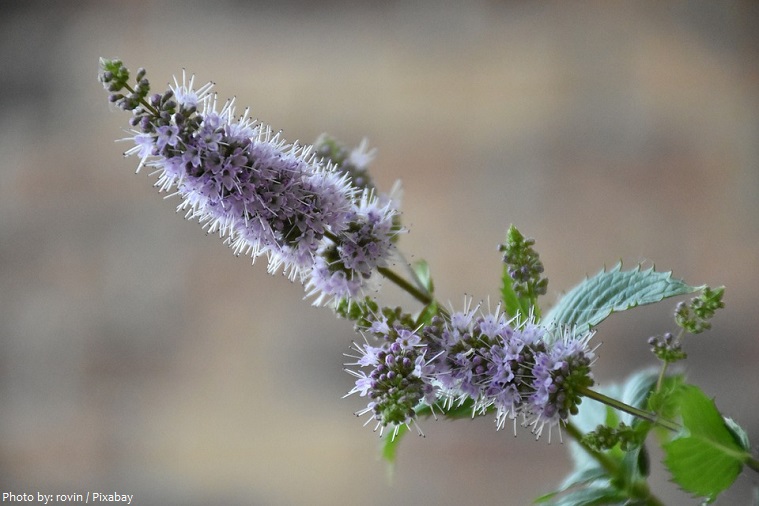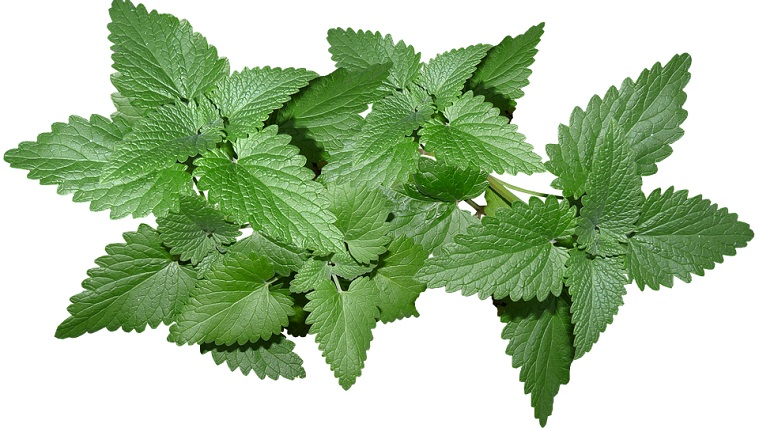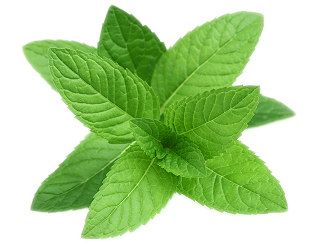Mentha also known as mint is a genus of plants in the family Lamiaceae.
There are about 18 mint species.
Native to Eurasia, North America, southern Africa, and Australia, mints are widely distributed throughout the temperate areas of the world and have naturalized in many places.
Mints are widely distributed and can be found in many environments but grow best in wet environments and moist soils.
Mints are almost exclusively perennial herbs.
They will grow 10 to 120 cm (4 to 47 in) tall and can spread over an indeterminate area.
The have square stems and opposite aromatic leaves. Colors of leaves range from dark green and gray-green to purple, blue, and sometimes pale yellow.
The flowers are white to purple and produced in false whorls called verticillasters. The corolla is two-lipped with four subequal lobes, the upper lobe usually the largest.
The fruit is a nutlet, containing one to four seeds.
A number of species, particularly peppermint and spearmint, are used as flavourings for foods.
Fresh mint is usually preferred over dried mint when storage of the mint is not a problem.
The leaves have a warm, fresh, aromatic, sweet flavor with a cool aftertaste, and are used in teas, beverages, jellies, syrups, candies, and ice creams.
While not typically consumed in large quantities, mint does contain a fair amount of nutrients.
Mint is a good source of protein, thiamin, niacin, vitamin B6, phosphorus and zinc, and a very good source of dietary fiber, vitamin A, vitamin C, riboflavin, folate, calcium, iron, magnesium, potassium, copper and manganese.
The health benefits of mint include improved digestion, weight loss, relief from nausea, depression, fatigue, and headache. It is also used in the treatment of asthma, memory loss, and skin care problems.
Mint essential oil and menthol are extensively used as flavorings in breath fresheners, drinks, antiseptic mouth rinses, toothpaste, chewing gum, desserts, and candies, such as mint (candy) and mint chocolate.
Mint is also used in landscaping as an attractive ground cover or potted plant.
Mint’s history is centuries long. It has used as a treatment for gastrointestinal problems for thousands of years.
Spearmint has been cultivated for so long, that some believe it would be virtually impossible to find it growing in its original form in nature.
Biblical references to mint suggest it was of such high value as to be used as tithes by the Pharisees along with anise and cumin. (Matthew xxiii, 23).
Mint history is colored by stories from ancient mythology. Proserpine, Pluto’s wife, was said to have transformed a hated rival into the mint plant. Both the Latin, Metha, and the Greek, Minthe, have come to be associated with metamorphosed beauty.
A symbol of hospitality and wisdom, “the very smell of it reanimates the spirit”, Pliny (Roman author) tells us.
Ancient Hebrews scattered mint on their synagogue floors so that each footstep would raise its fragrance.
Ancient Greeks and Romans rubbed tables with mint before their guests arrive.
The Romans brought it and mint sauce to Britain.
The pilgrims brought it to the United States aboard the Mayflower.





